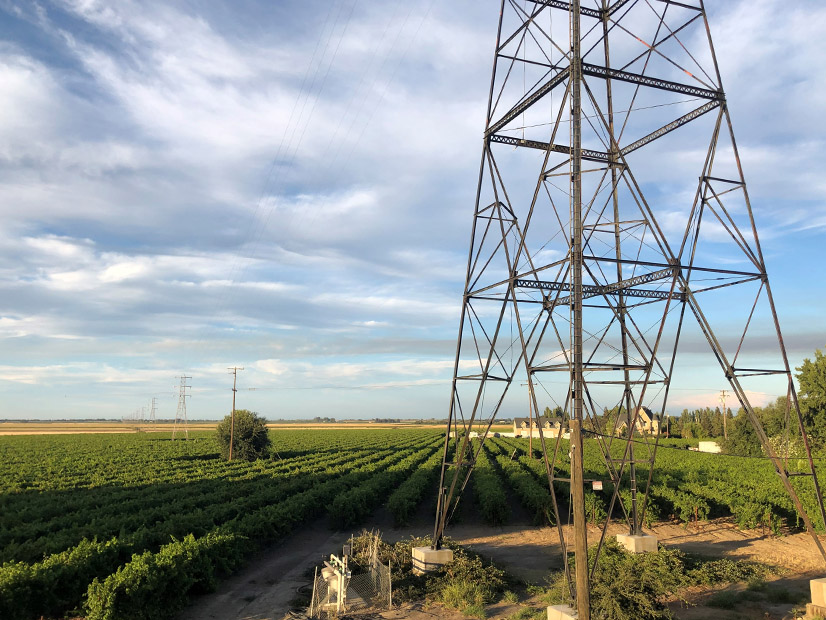FERC last week upheld its June 2021 finding that CAISO’s temporary wheel-through restrictions do not violate open-access transmission principles and approved a two-year extension of the provisions, but it urged the ISO to find a better long-term solution quickly.
In doing so, FERC rejected a rehearing request by the Arizona Corporation Commission and a coalition of Arizona utilities, including Arizona Public Service and Salt River Project, which continued to press their case that CAISO’s rules are discriminatory (ER21-1790).
The wheeling rules were part of a CAISO package of changes meant to promote summer reliability following the rolling blackouts and energy emergencies of summer 2020.
The rules reprioritized wheel-throughs so that transfers between the Northwest and Southwest could no longer take precedence over capacity needed to serve CAISO native load. Non-CAISO entities would have to apply at least 45 days in advance to designate high-priority wheel-throughs needed for reliability, giving the wheels equal standing with CAISO native load.
Utilities in the Southwest, dependent on Pacific Northwest electricity imported through CAISO’s grid each summer, were displeased. FERC, however, found the provisions acceptable. (See FERC OKs CAISO Wheel-through Restrictions.)
It reiterated that stance in its decision March 15.
“We continue to find that the scheduling priorities implemented in the interim tariff revisions result in a just and reasonable interim solution that is consistent with open-access policies, including the native load priority principles first articulated in Order No. 888 and reconfirmed in Order No. 890,” FERC wrote.
“These interim tariff revisions were designed to enable CAISO to maintain reliability in the summer of 2021 and strike a reasonable balance between ‘the transmission provider’s need to meet its native load obligations and the need of other entities to obtain service to meet their own obligations,’” it said.
Before the revisions, wheel-through transactions could receive scheduling priority higher than CAISO’s native load requirements, FERC noted.
The provisions “adjust scheduling priorities to protect native load by giving resource adequacy imports a scheduling priority equivalent to priority wheeling-through transactions and higher than non-priority wheeling-through transactions,” it said.
FERC acknowledged, however, that stakeholders remain “deeply divided” over the changes and said the challenging parties had reconveyed their “serious concerns with CAISO’s approach to implementing a native load priority.”
“The Federal Power Act does not require the commission to determine that a proposal is the best solution, only a reasonable one,” FERC said. “Therefore, we sustain the result in [our] June 2021 order as a just and reasonable interim solution for allocating transmission capacity fairly among users when the system is constrained.
“Nevertheless, in light of the interim tariff revisions’ potential impacts on neighboring balancing authority areas and parties’ ongoing concerns, we expect CAISO to work with stakeholders to design and file a just and reasonable and not unduly discretionary or preferential long-term solution as expeditiously as possible.”
In a related order (ER22-906), the commission accepted CAISO’s decision to extend the wheeling provisions for two more years through May 2024. The rules were originally scheduled to expire June 1 of this year. (See CAISO Extends Wheel-through Rules.)
“We find that extending the interim tariff revisions is just and reasonable and will provide certainty regarding the rules for wheeling-through transactions, while CAISO and stakeholders develop a long-term solution that will clearly delineate rights across CAISO’s transmission system,” FERC said.
The commission warned CAISO, however, that its findings were based on the rule changes being “interim,” not “indefinite,” and repeated its call for a quick resolution between the ISO and affected parties.
The commission also instructed CAISO to file quarterly reports updating it on its progress.
“In these filings, CAISO must describe any long-term alternative solutions being considered in the stakeholder process, explain any potential impediments to implementing any particular solution and provide an updated schedule for finalizing a proposal,” it said.


